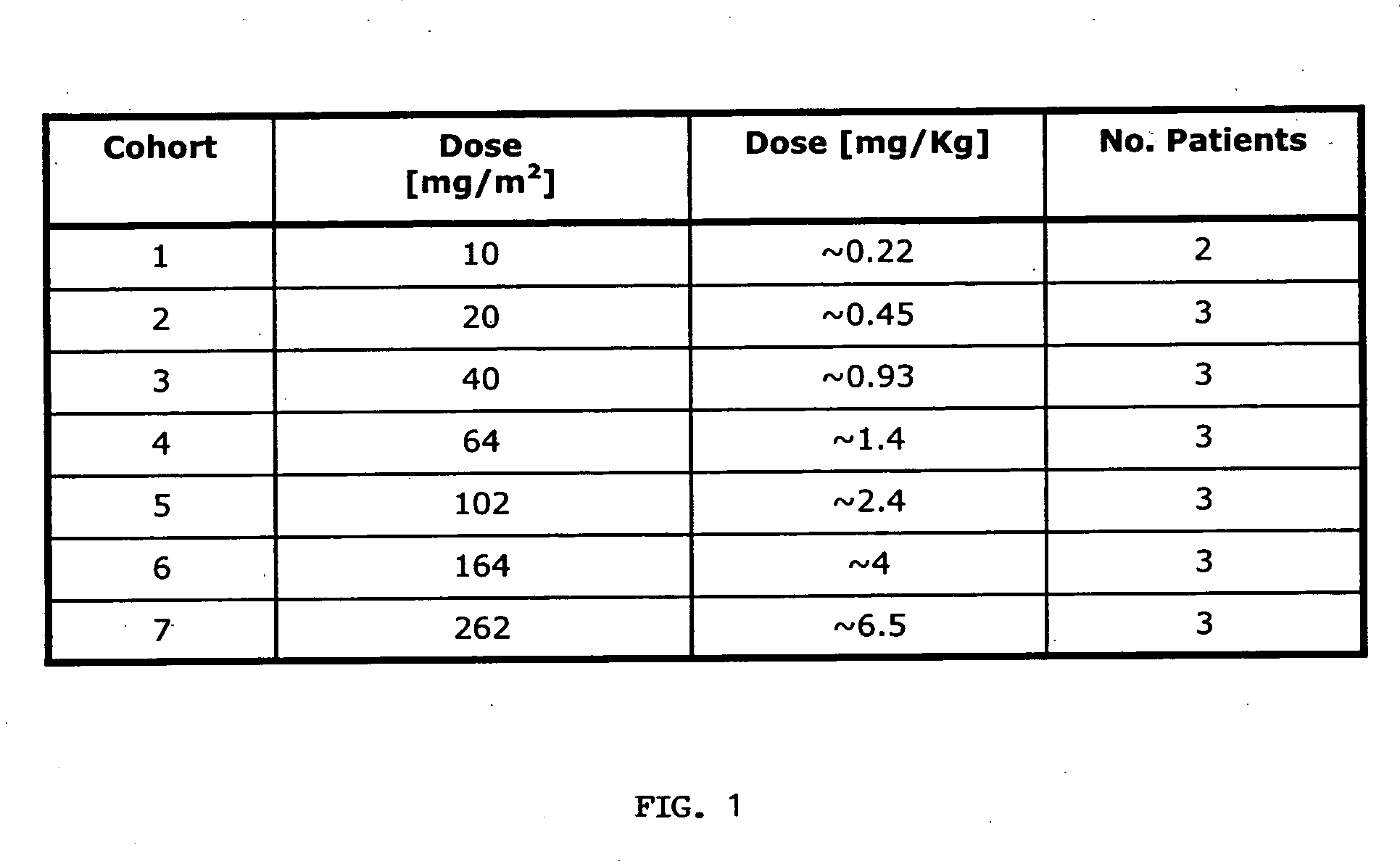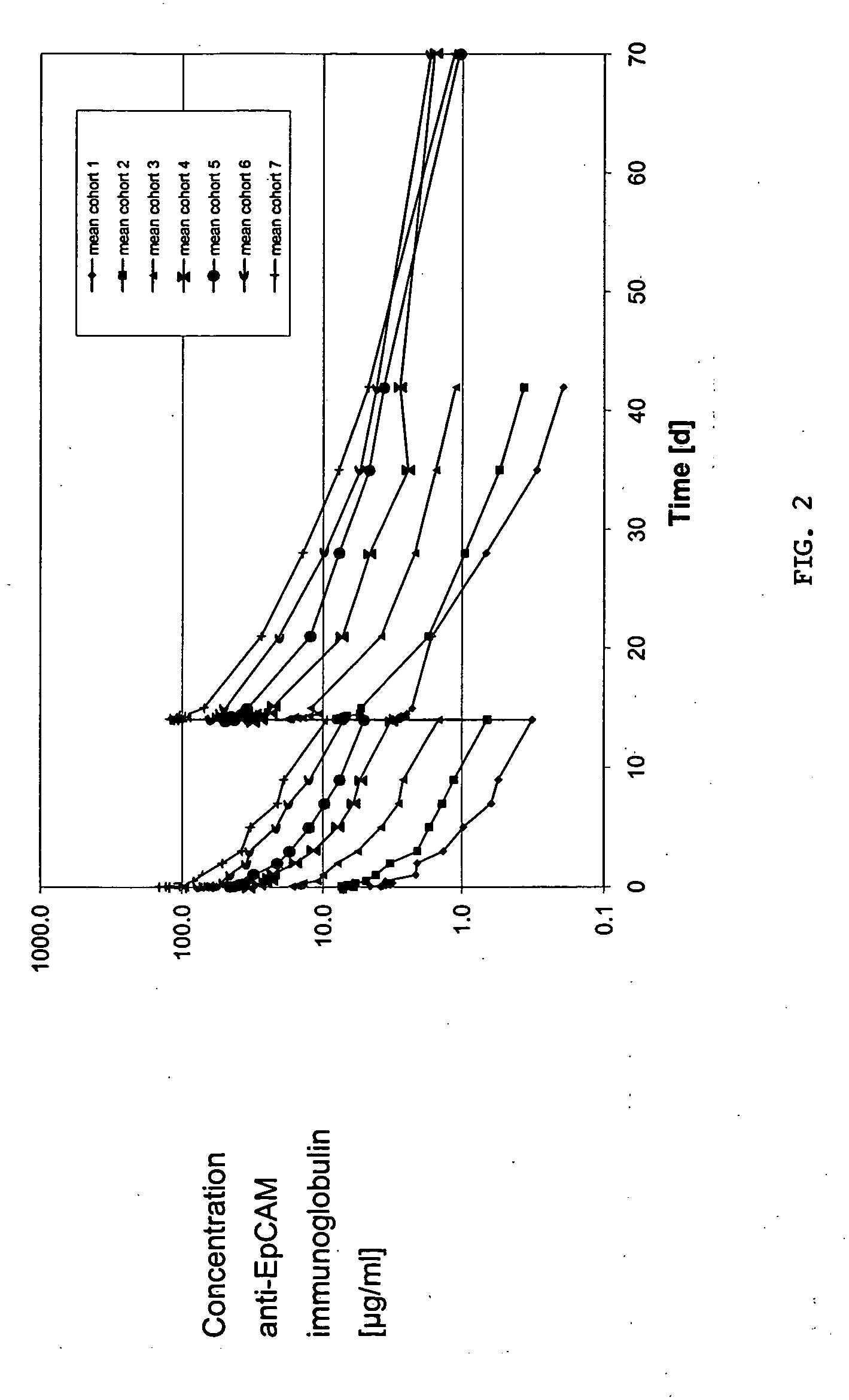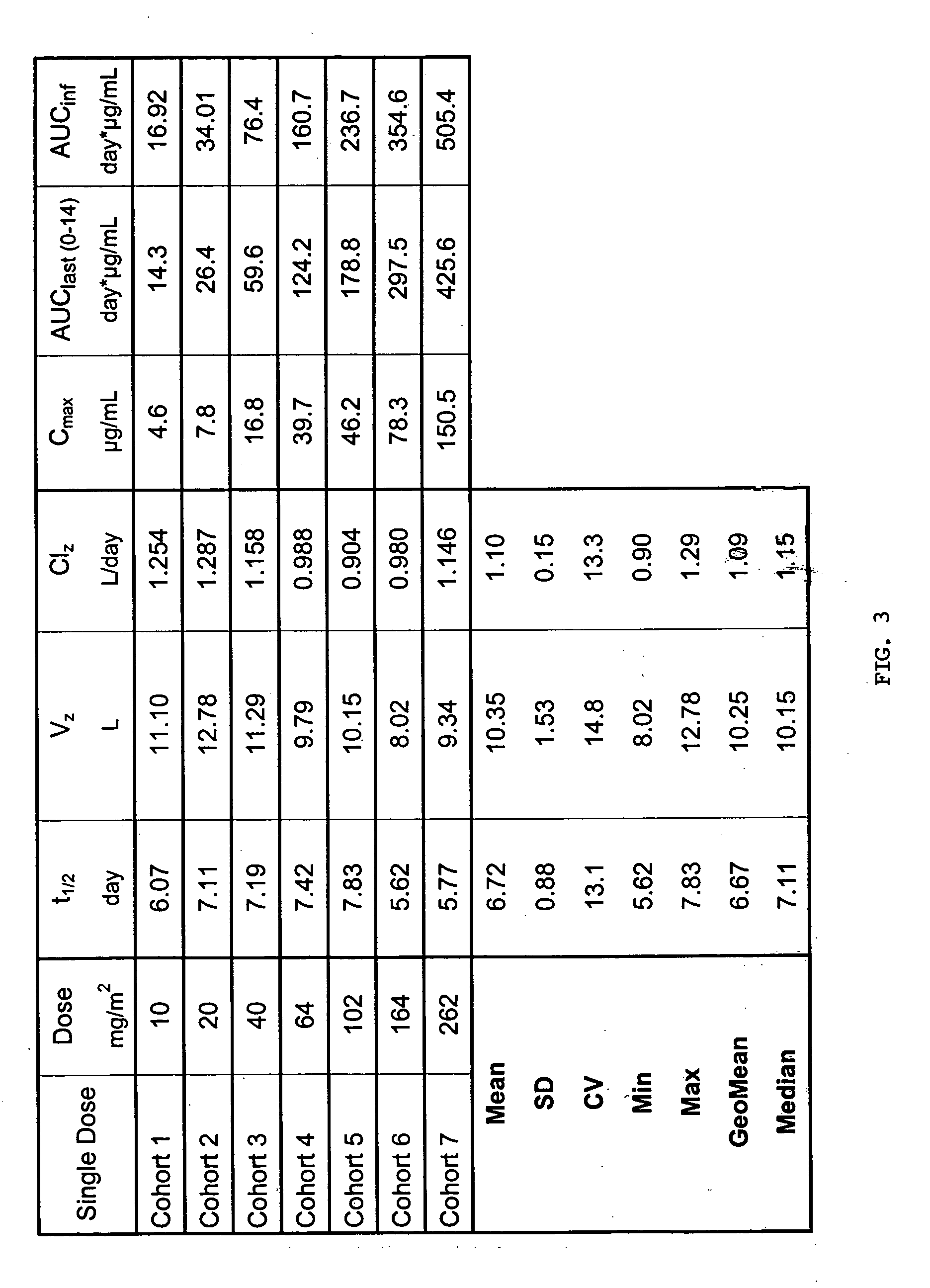Anti-EpCAM immunoglobulins
a technology of immunoglobulin and immunoglobulin, which is applied in the field of tumorous diseases using immunoglobulin molecules, can solve the problems of increasing the amount of immunoglobulin to a single dose level, increasing the risk of overdose of therapeutic immunoglobulin, and increasing the risk of overdose, so as to improve the quality of life of patients, improve the safety of patients, and eliminate the possibility of adverse and/or toxic side effects
- Summary
- Abstract
- Description
- Claims
- Application Information
AI Technical Summary
Benefits of technology
Problems solved by technology
Method used
Image
Examples
example 1
Acquisition of Pharmacokinetic Data Measured in the Phase I Study
[0059] Cohorts. The pharmacokinetics of an anti-EpCAM immunoglobulin characterized by SEQ ID NOs: 1 and 2 (hereinafter “Anti-EpCAM”) were investigated in patients with hormone refractory prostate cancer following two single intravenous infusions at a time interval of 14 days. The administered dosages were 10, 20, 40, 64, 102, 164 and 262 mg / m2 body surface area. Two or three patients at each dose level were treated on day 1 and day 15. Blood samples were taken at 29-31 sampling time points from day 1 to day 70 (56 days after second administration). The serum concentrations of Anti-EpCAM were measured by a specific ELISA method. The ELISA was set up as a typical sandwich ELISA, in which a rat anti-Anti-EpCAM antibody was used as the capture antibody and a chicken anti-Anti-EpCAM antibody as the detection antibody (as described in Sambrook, Molecular Cloning, Cold Spring Harbor Laboratory Press). The dosing schemes used...
example 2
Modeling of Anti-EpCAM Dosing Strategy Based on Measured Data Obtained in the Phase I Study
[0077] The dosage regimen and treatment duration selected for this study are based on pharmacokinetic modeling of the results of the phase I / II clinical study with Anti-EpCAM in patients with prostate cancer. The objective of the simulations was to find a dosing schedule for Anti-EpCAM to achieve serum trough levels of 10 and 30 μg / mL, respectively.
[0078] Based on preclinical experiments, serum trough levels of 10 μg / mL are expected to be effective for anti-tumor activity of Anti-EpCAM. However, it cannot be ruled out that higher doses might be more effective. Therefore, a second dose, calculated to achieve serum trough level of 30 μg / mL, is to be evaluated in clinical trials. No additional toxicity is expected with this serum trough concentration as Cmax and AUC values do not exceed the ones observed in phase I clinical studies.
[0079] Due to the better fit, all simulations were based on th...
example 3
Anti-EpCAM Toxicity Data, Comparison with ING-1, Extrapolation
[0092] The following describes adverse events (AE) observed for the various patient cohorts. For the purposes of the following, an AE is defined as any untoward medical occurrence in a patient or clinical investigation subject to whom a pharmaceutical product is administered and which does not necessarily have a causal relationship with this treatment. It could therefore be any unfavorable and unintended sign (including abnormal laboratory findings), symptom, or disease temporally associated with the use of the investigational product, whether or not considered related to the investigational product.
[0093] Adverse drug reactions (i.e., AEs considered at least possibly related to study drug by the investigator) were graded by the investigator according to NCI Common Toxicity Criteria (CTC, version 2.0). For adverse drug reactions not listed on the NCI CTC tables, the general definitions for grading of severity of adverse...
PUM
| Property | Measurement | Unit |
|---|---|---|
| half life | aaaaa | aaaaa |
| half life | aaaaa | aaaaa |
| time | aaaaa | aaaaa |
Abstract
Description
Claims
Application Information
 Login to View More
Login to View More - R&D
- Intellectual Property
- Life Sciences
- Materials
- Tech Scout
- Unparalleled Data Quality
- Higher Quality Content
- 60% Fewer Hallucinations
Browse by: Latest US Patents, China's latest patents, Technical Efficacy Thesaurus, Application Domain, Technology Topic, Popular Technical Reports.
© 2025 PatSnap. All rights reserved.Legal|Privacy policy|Modern Slavery Act Transparency Statement|Sitemap|About US| Contact US: help@patsnap.com



